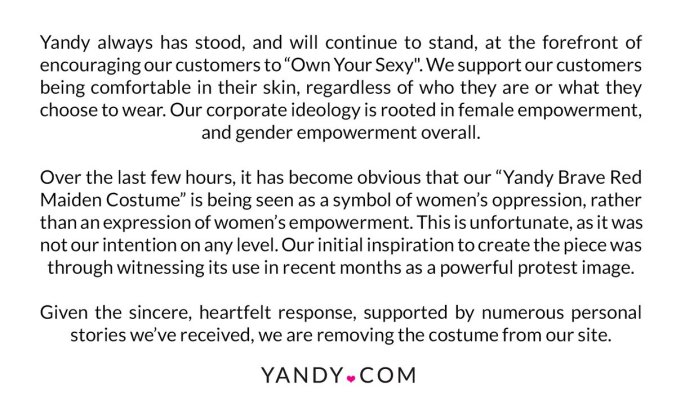What are the rules of #costuming & #cosplay? If you ask this question to any #costumer or #cosplayer, they’ll likely say that there aren’t any. While this is true in the sense that there is no universal costuming & cosplay group that has established any rules nor would it be possible for such a group (if it existed) to enforce them, there are rules that costumers & cosplayers should follow or face potential consequences for failing to do so, because some have.
What are these rules? Ones that apply to everyone (not just costumers & cosplayers) because they come from established laws or are established by venues, conventions, movie theaters, etc.
Wearing a costume or cosplay (including carrying props) in public does not exempt one from obeying established laws.
The Basic Rules That Apply to Everyone
1. Laws Governing Indecent Exposure
Indecent exposure is the deliberate exposure in public or in view of the general public by a person of a portion or portions of his or her body, in circumstances where the exposure is contrary to local moral or other standards of appropriate behavior. Social and community attitudes to the exposing of various body parts and laws covering what is referred to as indecent exposure vary significantly in different countries. It ranges from outright prohibition to prohibition of exposure of certain body parts, such as the genital area, buttocks or breasts.
Local, county, state, provincial & national governments have typically established laws defining indecent exposure that apply to everyone that is within their jurisdictions. If a costumer or cosplayer decides to go out in public wearing a costume or cosplay that violates indecent exposure laws, then there’s a good chance that the costumer or cosplayer is going to be arrested.
So, before wearing a costume or cosplay in public view, be sure that it doesn’t violate any indecent exposure laws that could apply.
2. Laws Governing the Wearing of Masks
Anti-masking laws refer to legislative or penal initiatives that seek to stop individuals from concealing their faces, who often do so to conceal their identities while committing a crime.
Now, while costumers & cosplayers have no criminal intent while wearing a mask (or other face-covering item, such as helmet) as part of a costume, many criminals do wear masks or helmets when committing crimes.
For this reason, if a costumer or cosplayer goes out in public wearing a mask or helmet that completely conceals their identity and it’s not Halloween or the intent of why as mask or helmet is being worn isn’t clear to the general public, then that costumer or cosplayer could find themselves being arrested or getting into trouble. We have reported multiple such instances on our blog & Facebook page. Here are 2 examples:
Here are other articles we’ve shared about people wearing costumes while engaged in criminal activity:
Thus, it is very important to know when it is and is not appropriate to wear a mask in public.
3. Laws Regarding Civilians Wearing Military Uniforms & “Stolen Valor”
In the United States, federal laws concerning the wearing of United States Military uniforms by people not on active duty are published in the United States Code (USC). Specifically, 10 USC, Subtitle A, Part II, Chapter 45, Sections 771 and 772.
Section 771 states:
Except as otherwise provided by law, no person except a member of the Army, Navy, Air Force, or Marine Corps, as the case may be, may wear –
(1) the uniform, or a distinctive part of the uniform, of the Army, Navy, Air Force, or Marine Corps; or
(2) a uniform any part of which is similar to a distinctive part of the uniform of the Army, Navy, Air Force, or Marine Corps
Section 772 lists some exceptions, the most important of which that is applicable to costumers & cosplayers is listed below:
(f) While portraying a member of the Army, Navy, Air Force, or Marine Corps, an actor in a theatrical or motion-picture production may wear the uniform of that armed force if the portrayal does not tend to discredit that armed force.
Now, while on the surface, these laws seem pretty plain, the reality is that no court has ever really defined what a “theatrical production” is. Hence, is Halloween or attending a comic con a “theatrical production”? While this isn’t clear, the only court case where this topic has been addressed had a very liberal determination.
In addition to the laws cited above, there’s also the issue of stolen valor.
“Stolen Valor” is a term applied to the phenomenon of people falsely claiming military awards or badges they did not earn, service they did not perform, Prisoner of War experiences that never happened, and other tales of military derring-do that exist only in their minds.
If you are going to wear a military uniform as a costume or cosplay, leave out any actual medals and don’t pretend that you ever served in the military. Otherwise, you can very quickly be seen as someone stealing valor. The U.S. government passed the Stolen Valor Act of 2013 to address issues of people attempting to obtain money, property, or other tangible benefits by convincing another that he or she received a military award.
4. Laws Regarding the Wearing of Law Enforcement Uniforms, Badges & Insignia
Without going into a lot of detail, it’s generally not a good idea to wear authentic law enforcement uniforms, badges or insignias. To do so could be construed as impersonating a law enforcement officer. If you want to read on this subject further, we recommend starting here: Legal information and links to U.S. Federal & U.S. State Laws and regulations as well as Foreign National Laws governing Badges, Emblems, Uniforms, Insignias and Names.
5. Laws Pertaining to Weapons
As many costumes & cosplays include prop weapons, it’s important to remember that those prop weapons shouldn’t be carelessly taken out into public where they could be misconstrued as being real weapons. Not only could you be potentially arrested, you could imperil your own life should a law enforcement officer decide to fire his/her weapon if the officer feels that he or she (or the general public) is in some way threatened.
For specifics on laws pertaining to types of weapons, the following links are useful:
It also goes without saying that it would be highly unwise to be carrying a prop that looks like an explosive device in this day & age, especially one that looks realistic.
6. Zero-Tolerance Policies at Schools
Most public school districts maintain very strict zero-tolerance policies for weapons & drugs. Even toy weapons (that are often used for costumes & cosplays) fall under this type of policy, as well as masks & helmets.
The bottom line, don’t take any prop weapons or wear masks to or near a public school.
Venue or Convention Specific Rules
Venues and conventions often have specific rules pertaining to costumes & props. As these rules vary widely, it is the responsibility of any costumer or cosplayer planning to attend to understand the specific venue or convention rules ahead of time. While its true that some conventions change rules at the last minute, it’s very important to stay on top of them for that very reason.
Any costumer or cosplayer whose costume or props don’t meet the rules of the venue or convention won’t be allowed to enter, and these rules (especially with regard to prop weapons) have been increased considerably since the unfortunate incident of the armed man who entered Phoenix Comic Con earlier this year. Phoenix Comic Con still has very strict rules. We have written posts regarding venue & convention rules:
Movie Theaters that Ban Masks and/or Costumes
Most movie theaters continue to ban any costumes that conceal the wearer’s face following the unfortunate shooting incidents that have occurred over the past couple of years.
Concluding Remarks
No one likes being told what they can and cannot do when it comes to costumes and cosplays, but applicable laws and rules can impact what individual costumers and cosplayers are planning to do. The most important thing is to be aware of them ahead of time. If the laws & rules are too restrictive for what you were planning to do, consider doing something different. You’ll still have just as much fun without the fear of getting into trouble.

Cosplayers
References
- Indecent exposure (Wikipedia)
- Anti-masking laws (Wikipedia)
- Is Wearing a Military Uniform Legal on Halloween?
- 10 USC, Subtitle A, Part II, Chapter 45, Section 771
- 10 USC, Subtitle A, Part II, Chapter 45, Section 772
- Stolen Valor
- Stolen Valor Act of 2013
- Legal information and links to U.S. Federal & U.S. State Laws and regulations as well as Foreign National Laws governing Badges, Emblems, Uniforms, Insignias and Names
- Bladed Weapons Laws
- Open Carry Gun Laws
- United States Gun Laws
- Arrested Phoenix Comicon Gunman Identified
- Los Angeles Comic Con Adopts Stricter Weapons Policy
- Ever-Changing Rules & Policies for Costumes & Props at Anime & Comic Conventions
- People Spent More Time in Line Waiting to Enter than Inside Anime Expo 2017
- Phoenix Comicon Plagued with Long Lines & Wait Time
- Prop Weapons Banned at Phoenix Comicon
- Movie Theater Shootings
- Colorado Theater Shooting Fast Facts






